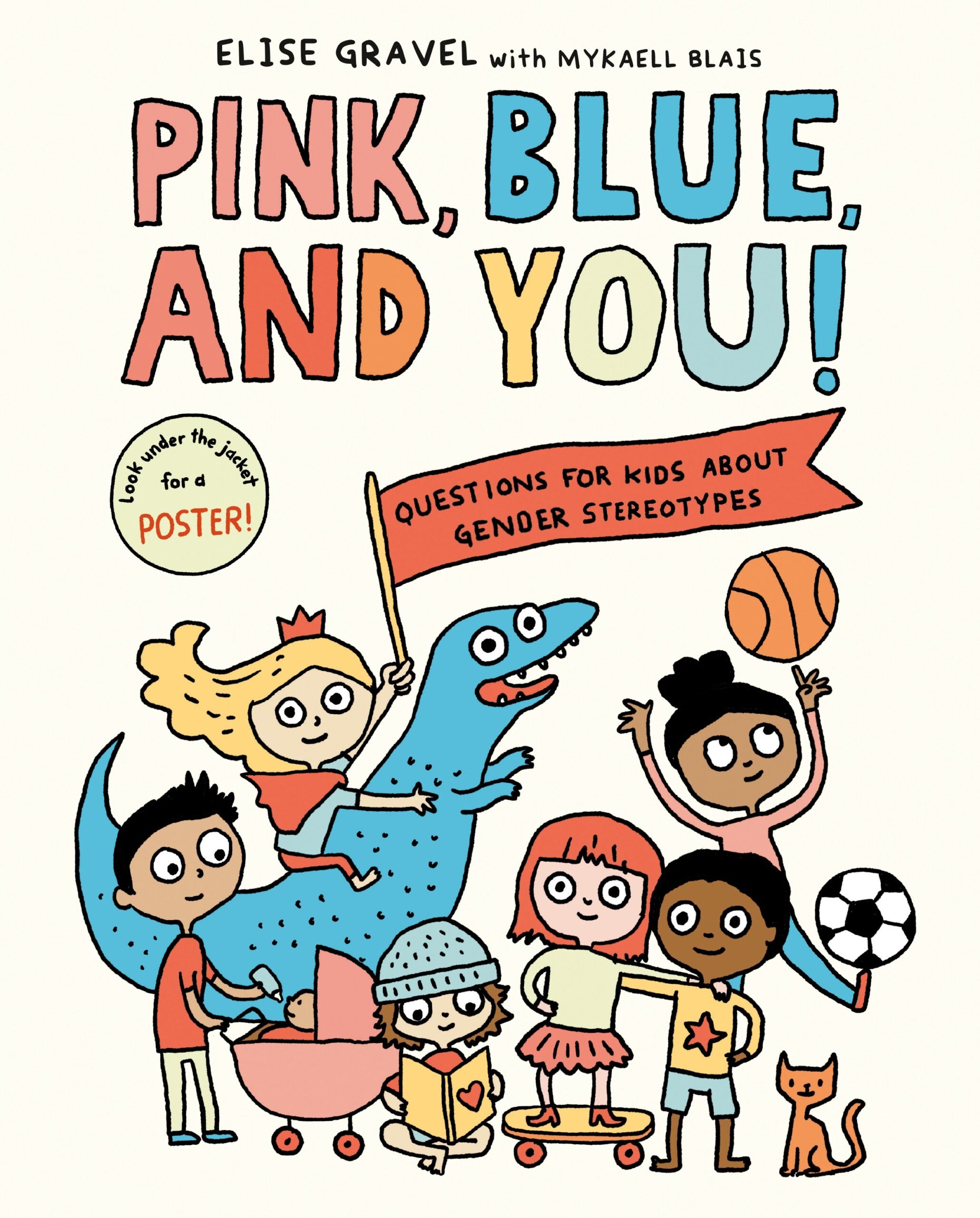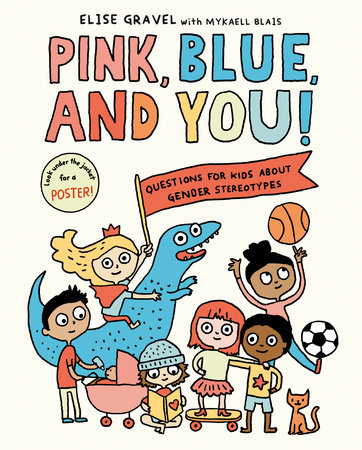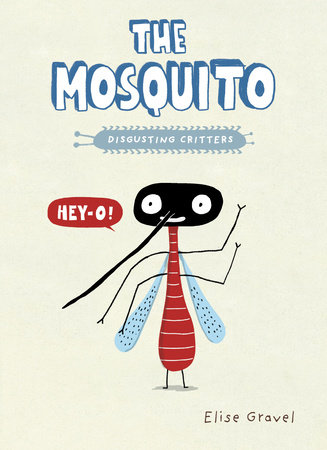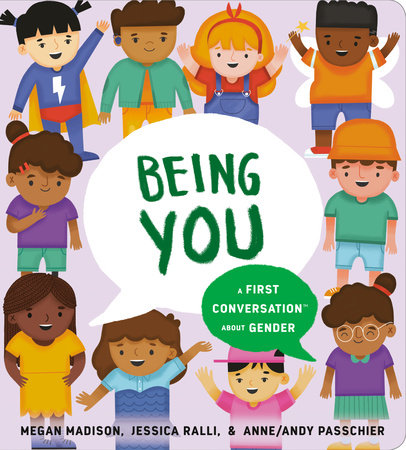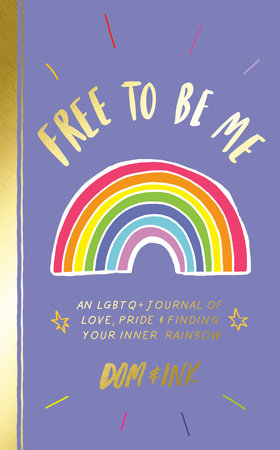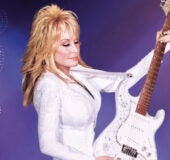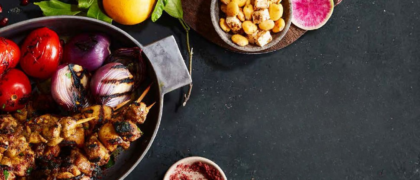Simple, accessible, and direct, this picture book is perfect for kids and parents or teachers to read together, opening the door to conversations about gender stereotypes and everyone’s right to be their true selves.
Is it okay for boys to cry? Can girls be strong? Should girls and boys be given different toys to play with and different clothes to wear? Should we all feel free to love whoever we choose to love? In this incredibly kid-friendly and easy-to-grasp picture book, author-illustrator Elise Gravel and transgender collaborator Mykaell Blais raise these questions and others relating to gender roles, acceptance, and stereotyping.
With its simple language, colorful illustrations, engaging backmatter that showcases how “appropriate” male and female fashion has changed through history, and even a poster kids can hang on their wall, here is the ideal tool to help in conversations about a multi-layered and important topic.
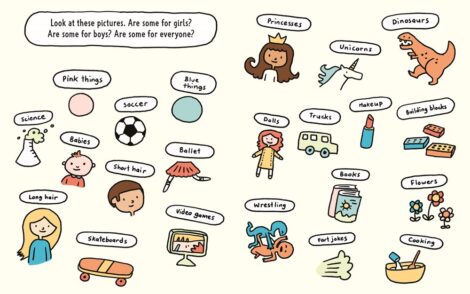
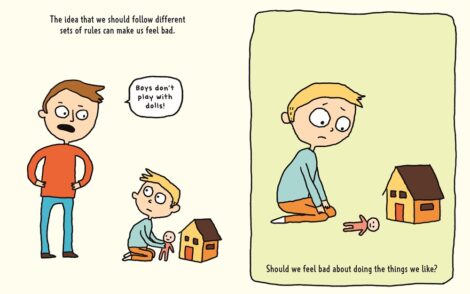
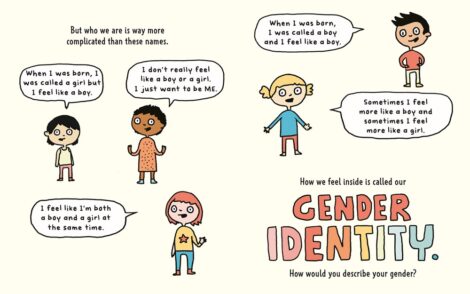
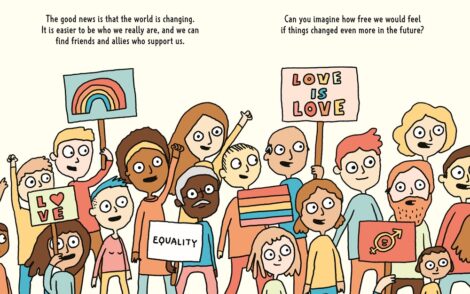
Q&A with Elise Gravel and Mykaell Blais
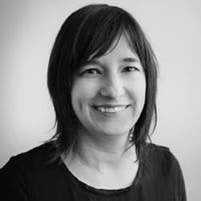

1) What inspired you to write PINK, BLUE AND YOU?
Elise: I heard an artist on the radio say that school resources on gender and sexual diversity are extremely scarce and that her child’s first day in kindergarten was already stereotyped. The kids had to draw their mom and dad, and kids who had different family models felt excluded. I decided to help by writing this book.
Mykaell: I leave this one to Elise 😉
2) What was the most difficult part about writing/illustrating PINK, BLUE AND YOU? What part was the easiest?
Elise: The most difficult part for me was to realize that, as a cis straight woman, I had a very biased and restricted experience on gender, so I couldn’t do this alone. I’m very grateful that Mykaell came to the rescue! The easiest part was the illustration, which is always fun.
Mykaell: The hardest part was finding simple words and phrases to explain some complex concepts like what gender is and how it impacts social expectations. The easiest part was working with Elise, and how open Elise was to my feedback. I feel privileged to have been able to contribute to this book.
3) What character or element of the story do you identify with the most and why?
Elise: All of them! As a child, I didn’t feel like the stereotypes applied to me, and I wish I had friends who felt free to express who they were.
Mykaell: I identify with the child with short hair who says they don’t like sports! During my transition, I had to deconstruct a lot of stereotypes that I learned when I was younger such as boys love sports, they are strong and they never cry. I had to learn what stereotypes were and who I am. So even though I’m a boy, I don’t like sports and I cry and that’s fine.
4) What do you want kids today to take away from this story?
Elise: That they can be whoever they want to be and respect the way people around them want to be as well.
Mykaell: I would like children to remember that some people can be different from our beliefs on how they should be and that they do not deserve discrimination, but respect. Everyone is unique, beautiful and deserves the same rights.
6) What are you currently reading?
Elise: A Children’s Bible by Lydia Millet
Mykaell: A Quick and Easy Guide to Queer and Trans Identities by Mady G. and J. R. Zuckerberg





